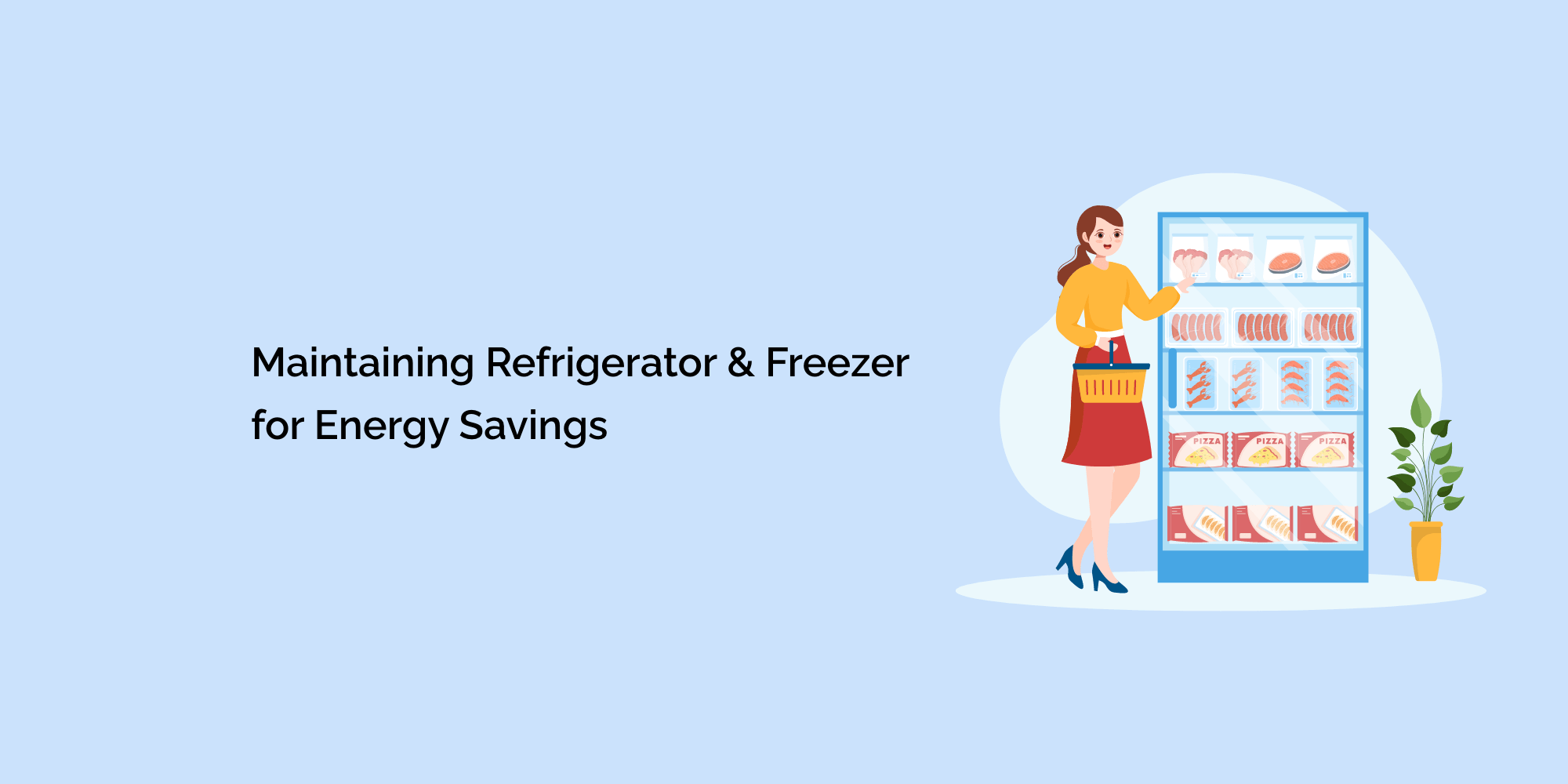Refrigerators and freezers are essential appliances in our daily lives, keeping our food fresh and safe. However, they can be significant energy consumers in our homes. By properly maintaining and caring for your refrigerator and freezer, you can not only extend their lifespan but also improve their energy efficiency
In this blog, we will explore essential tips and techniques for maintaining your refrigerator and freezer to maximize energy savings. From regular cleaning and temperature control to proper organization and maintenance, we will provide you with practical insights to optimize the performance of these appliances while minimizing energy consumption.
Understanding Refrigerator and Freezer Energy Consumption
To effectively maintain and conserve energy in your refrigerator and freezer, it's important to understand how these appliances consume energy. Refrigerators and freezers require electricity to power the compressor, maintain the desired temperature, and run various components like fans and defrost systems. By becoming familiar with the energy consumption patterns of these appliances, you can take targeted steps to minimize their energy usage.
Temperature Control and Settings
a. Optimal Temperature Settings:
Set your refrigerator to a temperature between 2-4°C (36-40°F) and your freezer to -18°C (0°F). These temperature ranges ensure food safety while preventing excessive energy consumption caused by colder than necessary settings.
b. Regular Temperature Checks:
Use a refrigerator thermometer to monitor and adjust the temperature as needed. Check the accuracy of your appliance's built-in temperature display by comparing it with the thermometer readings.
Proper Refrigerator Maintenance
a. Regular Cleaning: Keep the interior and exterior of your refrigerator clean to optimize its performance. Remove and clean shelves, drawers, and door seals regularly to prevent the buildup of dirt, dust, and food debris that can hinder efficiency.
b. Efficient Organization: Organize the contents of your refrigerator in a way that allows for proper airflow. Avoid overcrowding and blocking air vents, as this can impede the circulation of cold air and cause the compressor to work harder.
c. Check Door Seals: Inspect and clean the door seals (gaskets) regularly to ensure they form a tight seal. Damaged or worn-out seals can lead to air leakage, resulting in increased energy consumption. If necessary, replace faulty door seals promptly.
d. Defrost Regularly: If your refrigerator has a manual defrost feature, defrost it regularly to prevent excessive ice buildup, which can reduce efficiency. Take care to follow the manufacturer's instructions when defrosting.
Freezer Maintenance for Energy Efficiency
a. Defrosting: If your freezer requires manual defrosting, regularly defrost it to remove ice buildup. Excessive ice can decrease energy efficiency by reducing airflow and forcing the compressor to work harder. Follow the manufacturer's instructions for safe and effective defrosting.
b. Organization and Airflow: Similar to refrigerators, ensure proper airflow in your freezer by organizing items strategically. Avoid overcrowding and blocking air vents to maintain optimal circulation and temperature distribution.
c. Check and Clean Condenser Coils: The condenser coils, usually located at the back or bottom of the freezer, release heat from the appliance. Over time, dust and debris can accumulate on the coils, reducing their efficiency. Regularly clean the coils using a vacuum cleaner or a coil cleaning brush.
d. Check and Replace the Evaporator Fan: The evaporator fan circulates cold air throughout the freezer. If the fan is noisy or not running smoothly, it may be time for a replacement. A malfunctioning fan can lead to temperature inconsistencies and increased energy consumption.
Additional Tips for Energy Savings
a. Avoid Placing Hot Items: Allow hot or warm food to cool down before placing them in the refrigerator or freezer. Placing hot items directly into the appliance forces the compressor to work harder to maintain the desired temperature.
b. Minimize Frequent Door Openings: Limit the number and duration of door openings to reduce temperature fluctuations and minimize energy loss. Take what you need quickly and close the door promptly.
c. Maintain Proper Air Circulation: Ensure that there is adequate space around the refrigerator and freezer for proper air circulation. Avoid placing them too close to walls or other appliances, as this can hinder heat dissipation and impact energy efficiency.
Conclusion
Maintaining your refrigerator and freezer for optimal energy savings not only helps reduce your energy bills but also contributes to a more sustainable lifestyle. By implementing the tips and techniques discussed in this blog, such as temperature control, regular cleaning, efficient organization, and proper maintenance, you can maximize the energy efficiency of these appliances.
Remember to regularly monitor temperatures, clean coils and seals, defrost when necessary, and practice good food storage habits. By doing so, you will enjoy lower energy consumption, extend the lifespan of your appliances, and contribute to a greener environment. Embrace these energy-saving practices and enjoy the benefits of efficient refrigerator and freezer operation.








